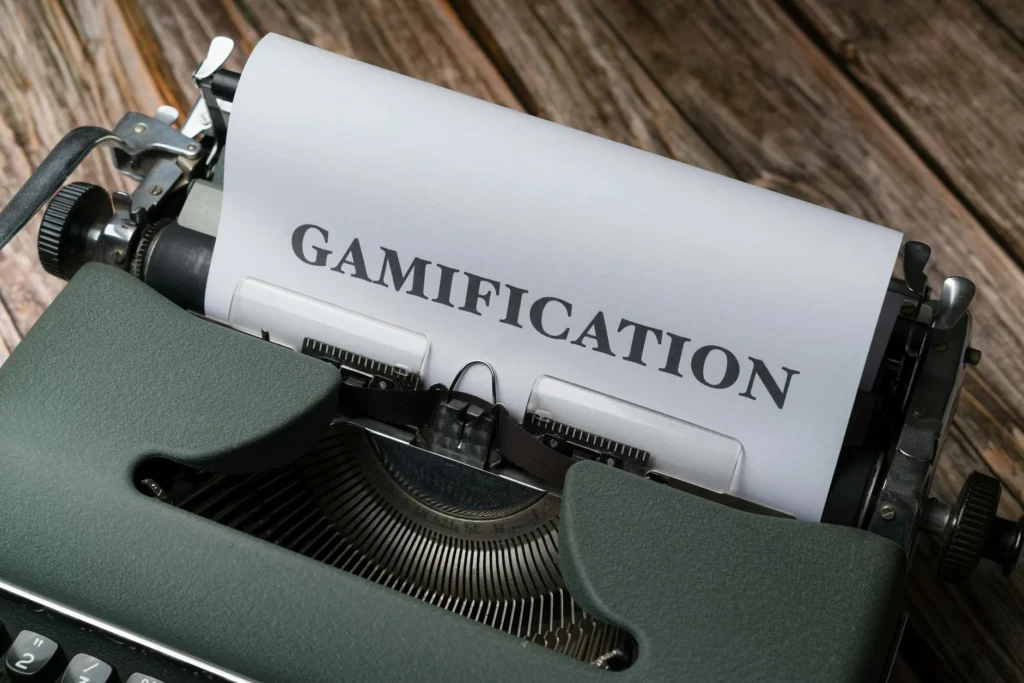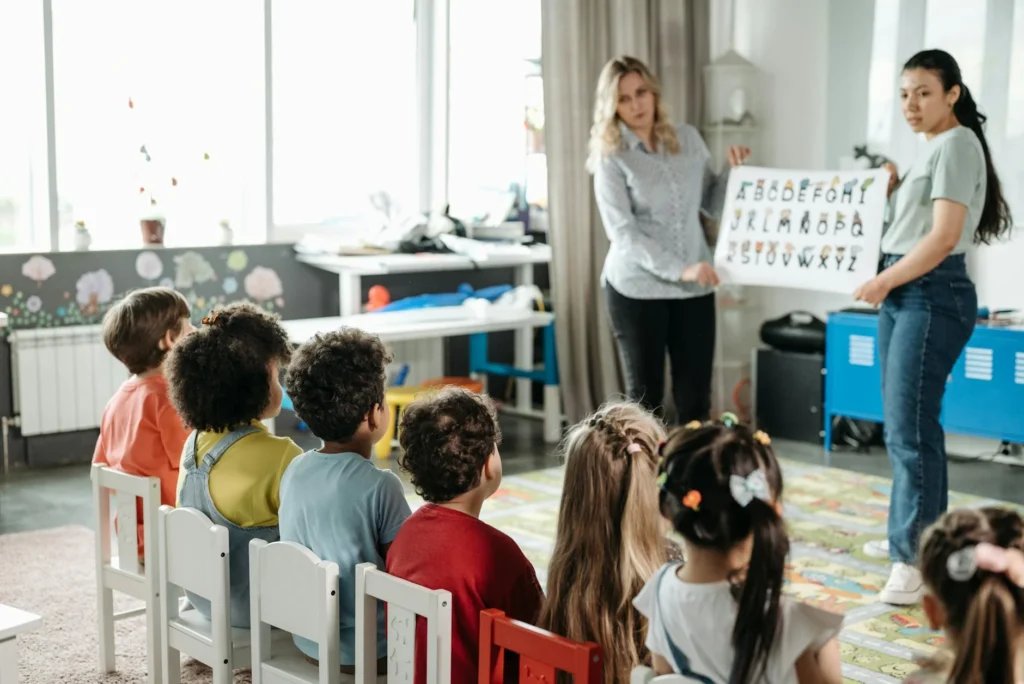Does Gamification Work Better for Younger or Older Learners?
Gamification has reshaped how we approach education, blending game elements like leaderboards, rewards, and challenges into learning settings.
While it’s clear that gamification boosts engagement and motivation, the question remains: does gamification work better for younger or older learners? The answer lies in understanding how different age groups respond to these strategies and how their learning preferences shift over time.
This article will discuss how:
- Gamification combines game elements like challenges and rewards to make learning fun and engaging.
- Younger learners often respond well to visuals, rewards, and interactive elements.
- Older learners may value challenges and real-world applications more.
- Age impacts how people connect with gamified strategies and their learning preferences.
- Success depends on tailoring approaches to meet specific needs of each age group.
We’ll explore this dynamic, weighing the benefits for both groups, and uncover what makes gamification effective across diverse settings.
What is Gamification in Education?

Gamification in education involves applying game elements like points, challenges, and rewards to learning experiences. This approach makes lessons more interactive and engaging, encouraging learners to participate actively.
Whether in classrooms, online platforms, or corporate training settings, gamification captures attention and keeps learners motivated. It fosters progress by turning everyday educational tasks into opportunities for achievement and fun.
Key Elements of Gamification
Gamification isn’t just about adding games; it’s about integrating specific elements that drive participation and learning. Here’s what makes it effective:
- Challenges: Establishing tasks or goals motivates learners to strive for completion. Whether it’s solving a complex math problem or finishing a training module, challenges keep learners on track and engaged.
- Rewards: People thrive when there’s recognition. Gamification makes use of badges, points, and other tokens to celebrate accomplishments. These tangible incentives spark enthusiasm and give learners something to aim for.
- Feedback Loops: Feedback provides clarity on performance and helps learners adjust their actions. Immediate feedback in a gamified system, like progress bars or encouraging messages, gives learners confidence to keep moving forward.
These key elements create a learning environment that feels both fun and productive, driving engagement for learners of all ages. For further insight into engaging learners, you might want to explore more on adaptive learning in education.
Examples of Gamification in Practice
Gamification has grown beyond classrooms. Here’s how it looks in action:
- Classroom Integration: Teachers might use platforms like Kahoot! to create quizzes that feel more like games than tests. Students earn points while answering correctly, making learning competitive and enjoyable.
- Corporate Learning Tools: In the workplace, gamified eLearning tools integrate features like rankings and rewards to upskill employees. These platforms help workers stay motivated while tackling new skills or workflows.
- Fitness Apps for Cognitive Training: Applications like Duolingo gamify language learning by rewarding users with streaks for consistent practice. Learners unlock levels as they deepen their knowledge.
Cognitive and Motivational Differences Between Age Groups

Does gamification work better for younger or older learners? Gamification in education thrives on understanding how people think and what motivates them to learn.
Younger and older learners approach tasks with different mindsets, preferences, and strategies, impacting how they respond to game-like elements. By exploring these differences, we better understand if gamification works better for younger or older learners.
Learning Preferences of Younger Learners
Children and teenagers often bring high energy and a shorter attention span to the table. They have specific needs and preferences when it comes to education, shaped by their stage in cognitive development.
- Interactive Activities: Younger learners excel with hands-on, dynamic teaching methods. Whether it’s a game, quiz, or project-based assignment, when learning feels like play, they engage wholeheartedly. Think of how students light up during interactive tools like educational apps or gamified platforms.
- Quick Feedback: They thrive on immediate rewards for their progress. Incentives like badges, levels, or leaderboards appeal to their desire for fun and acknowledgment, boosting both engagement and their willingness to compete.
- Short Attention Spans: With shorter windows of concentration, highly engaging and visually stimulating methods are key. Gamification aligns perfectly here, breaking tasks into bite-sized challenges and keeping them motivated.
Learning Preferences of Older Learners
Adults and older students typically seek deeper meaning in their learning experiences. They value practical applications and intrinsic rewards over surface-level recognition.
- Intrinsic Motivation: Older learners focus on personal growth or achieving long-term goals, as they’re often driven by internal rewards. Certificates or achievements take a backseat to specific benefits like career progression or personal satisfaction.
- Goal-Oriented Behavior: Whether it’s completing a professional course or mastering new skills, adult learners are methodical in their approach. They prefer structured learning paths with clear outcomes.
- Adaptability to Technology: Although some may initially struggle with adopting new tools, a well-designed gamified platform that prioritizes ease of use sparks their motivation and helps them thrive.
The Research on Gamification: Younger vs. Older Learners

Gamification has been praised for its ability to engage learners across all age groups. But does it yield different results when applied to younger learners compared to older learners? Exploring this question involves examining case studies of gamification from classrooms to corporate training programs. Let’s break it down.
Case Studies Involving Younger Learners
Younger learners, such as elementary and high school students, are often drawn to gamification because it aligns naturally with their developmental stage. They enjoy playful, interactive tasks that transform lessons into memorable experiences.
- Elementary Education: One shining example is the use of platforms like ClassDojo. In ClassDojo, kids earn points for good behavior and accomplishments. Teachers have reported that students not only engage more but also develop better habits through these incentives. Educational games like Spelling City take it further, helping children learn vocabulary through entertaining challenges.
- High School Engagement: Gamification in high school often combines competition and collaboration. Tools like Kahoot! allow students to participate in quizzes using smartphones, competing for the top spot while reinforcing classroom lessons. In some classrooms, Minecraft: Education Edition takes the center stage, enabling students to explore STEM subjects in an engaging, creative way.
Case Studies Involving Older Learners
When it comes to older learners, the appeal of gamification shifts. Instead of flashy elements, this audience often prioritizes rewards tied to personal or professional growth.
- Corporate Training: One standout example is Deloitte’s Leadership Academy, a gamified training platform. It transformed leadership education by including elements like achievement badges and progress tracking. The results? Improved engagement and higher completion rates for training modules.
- Adult Education Programs: Programs like Skillshare and Coursera embrace gamification by awarding certificates and progress badges as learners advance through courses. These rewards serve as tangible proofs of growth, appealing to adults’ intrinsic desire to improve skills and achieve career advancement.
Benefits and Drawbacks of Gamification for All Age Groups

Gamification can be likened to a double-edged sword—it has the potential to significantly transform learning but also carries challenges that cannot be ignored. Depending on the learner’s age, these benefits and drawbacks vary widely, highlighting the importance of tailoring gamified approaches to meet their specific needs. Let’s break this down by age group.
Potential Benefits for Younger Learners
Young learners are naturally curious and thrive in environments that engage their creativity and imagination. Gamification harnesses these traits to deliver benefits that make learning both effective and enjoyable.
- Increased Engagement: Gamified activities turn lessons into a vibrant experience where kids and teens eagerly participate. Tasks such as earning rewards or climbing leaderboards keep their attention, even on topics that might otherwise seem dull.
- Improved Knowledge Retention: Games create an emotional experience. For younger students, this emotional connection helps them to better recall information. Think of platforms like Kahoot!, which make class quizzes memorable and exciting.
- Boost in Collaborative Skills: Many gamified settings involve teamwork, teaching younger learners how to work effectively with others. These setups foster critical skills such as communication, negotiation, and mutual problem-solving.
Potential Drawbacks for Younger Learners
Despite its benefits, gamification for younger learners isn’t without its pitfalls. Certain tendencies in children can lead to unintended outcomes.
- Over-Reliance on Rewards: When external rewards dominate, it’s easy for children to lose sight of intrinsic motivation. They may perform tasks only for points or badges, rather than for the joy of learning.
- Distractions from Core Goals: Gamified elements can sometimes overshadow the primary learning objectives. For instance, students might focus more on winning than actually absorbing the lesson.
Potential Benefits for Older Learners
Gamification isn’t just for kids. Adults and older learners can also reap its benefits, particularly in educational and professional contexts.
- Skill Acquisition: Games make mastering new skills less intimidating. Whether it’s navigating professional training or tackling new tech tools, gamification simplifies complex subjects.
- Increased Motivation: Adults often look at learning as a necessity tied to their careers or personal growth. Gamification adds a layer of interest, turning routine training into something to look forward to.
Potential Drawbacks for Older Learners
Older learners approach gamification with a more pragmatic lens, but this doesn’t mean it’s a perfect fit for everyone.
- Learner Resistance: Not everyone finds gamified methods appealing. Some older learners might prefer traditional teaching styles and view gamification as unnecessary or even childish.
- Need for Sophisticated Game Design: If the game mechanics are poorly designed or overly simplistic, adult learners may disengage quickly. They need meaningful challenges that contribute to their personal or professional goals.
Practical Strategies for Educators to Apply Gamification Effectively

Gamification offers a vibrant, interactive way to engage learners at any age. However, the success of using game elements in education depends on tailoring strategies to fit the developmental and motivational needs of different audiences. Let’s dive into focused strategies for both younger and older learners.
Strategies for Younger Learners:
Younger learners thrive in visually appealing, fun environments where their curiosity can flourish. This makes game-like activities a natural fit for their cognitive and emotional needs. To effectively gamify their learning experience, consider the following strategies:
Incorporate Game-Based AppsApps like Kahoot! and ClassDojo have already become staples in many classrooms. These platforms allow educators to create quizzes, assign rewards, and set friendly competitions that make learning enjoyable. With features like badges and levels, these apps keep students motivated.
Use Interactive Classroom ToolsTools like smartboards or software such as Minecraft: Education Edition can transform lessons into interactive adventures. For example, students might explore concepts like geometry by building structures within the game, turning abstract ideas into tangible experiences.
Focus on Participation Over CompetitionWhile competition can be motivating, it’s crucial to ensure every child feels included. Instead of just rewarding top performers, recognize milestones such as effort or improvement. This keeps participation levels high and fosters a positive classroom vibe.
Integrate Thematic LearningImagine turning a social studies lesson into a treasure hunt or a history topic into a time-travel adventure. By weaving game mechanics into thematic teaching, students stay engaged while developing critical thinking skills.
Strategies for Older Learners:
For older learners, gamification needs a practical edge. Unlike younger learners, they are often driven by real-world goals—professional advancement, certification, or personal mastery. The following strategies cater to their unique needs:
-
Gamify Corporate Training ModulesMany organizations have successfully gamified professional development. Platforms like Coursera and Skillsoft offer features like progress tracking, certificates, and dashboards. These elements are highly effective in motivating employees to complete training programs.
-
Set Clear Goals and Provide Immediate ValueOlder learners appreciate systems that align with their objectives. For instance, gamified platforms that simulate workplace scenarios can help learners practice skills in a low-stress environment while receiving immediate feedback.
-
Use Subtle CompetitionWhile corporate learners may not respond well to loud competitive elements like leaderboards, they do appreciate goal achievements and internal tracking. Features like streaks for consistent progress or private challenge modes can encourage participation without overloading them.
-
Focus on Practical UtilityOlder learners value gamification when it directly benefits their career or personal growth. Whether it’s mastering a new software tool or learning industry-specific practices, they engage better when the outcome impacts their real-world goals.
-
Integrate Flexible PlatformsMany older learners juggle multiple responsibilities, from work to family. Having mobile-friendly gamified tools allows them to complete training at their own pace, making learning accessible and stress-free.
Final Thoughts
The question “Does gamification work better for younger or older learners?” revolves around the fundamental understanding of how individuals across age groups approach motivation, engagement, and learning styles. Gamification proves to have distinct merits and challenges for both younger and older learners, requiring educators to tailor approaches that resonate with these groups’ unique needs.
- Assess the needs of your learners. Consider their age, goals, and interests.
- Create engaging activities for younger learners. Focus on fun and interaction.
- Design practical applications for older learners. Highlight real-world benefits.
- Gather feedback regularly. Make adjustments based on what learners say.
- Monitor progress. Use data to improve your approach over time.
While younger learners thrive in gamified environments filled with excitement and interactivity, older learners benefit from systems that focus on intrinsic rewards and practical applications. The effectiveness of gamification isn’t tied to age alone; instead, it depends on how well its design aligns with a learner’s goals and cognitive development.
Author
-

The PathBuilder team is a dynamic group of dedicated professionals passionate about transforming education through adaptive learning technology. With expertise spanning curriculum design, AI-driven personalization, and platform development, the team works tirelessly to create unique learning pathways tailored to every student’s needs. Their commitment to educational innovation and student success drives PathBuilder’s mission to redefine how people learn and grow in a rapidly changing world.
View all posts

















The PathBuilder team is a dynamic group of dedicated professionals passionate about transforming education through adaptive learning technology. With expertise spanning curriculum design, AI-driven personalization, and platform development, the team works tirelessly to create unique learning pathways tailored to every student’s needs. Their commitment to educational innovation and student success drives PathBuilder’s mission to redefine how people learn and grow in a rapidly changing world.